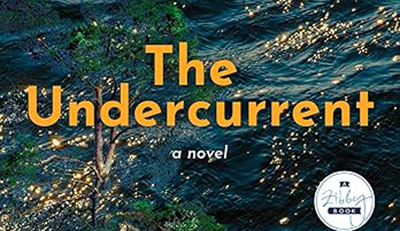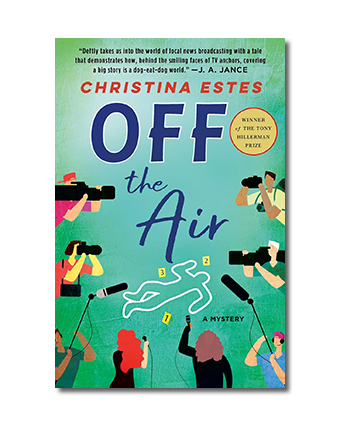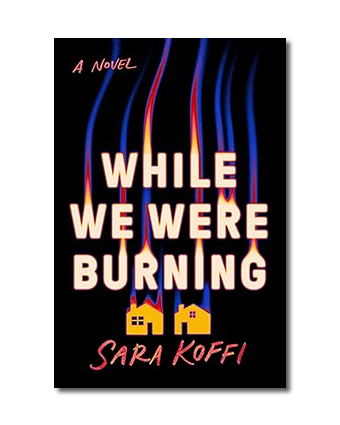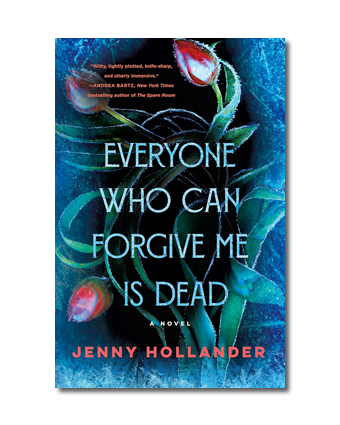A Girl Disappears. The Aftershocks Do Not.
A Spotlight on Author Sarah Sawyer
By Neil Nyren
“People don’t just disappear. Of course they don’t. They take up too much space in the world. They are pounds of flesh, gallons of blood. Teeth, bones, fingernails. It all has to go somewhere.”
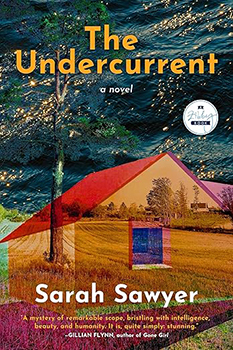 In Sarah Sawyer’s The Undercurrent, it is 2011, but it might as well be 1987. That is when a thirteen-year-old girl named Deecie Jefferies vanished from an empty field in Austin, Texas, leaving only her footprints in the mud. The people who lived near that field have never recovered from the events of that year, not really. And now it is all about to come rushing back.
In Sarah Sawyer’s The Undercurrent, it is 2011, but it might as well be 1987. That is when a thirteen-year-old girl named Deecie Jefferies vanished from an empty field in Austin, Texas, leaving only her footprints in the mud. The people who lived near that field have never recovered from the events of that year, not really. And now it is all about to come rushing back.
Bee Rowan is a new mother now in Portland, Maine, but her postpartum depression has her restless, unmoored. Her twin brother, Gus, quickly became lost to a cycle of drugs, rehab, homelessness, and arrests, and she hasn’t seen or talked to him since she left Austin long ago. Their mother, Mary, still lives there, but their five-minute phone calls are about nothing.
And then Bee gets a text, from the boy who was Gus’s inseparable friend, Leo, and Bee’s own first crush. Against her better instincts, she agrees to a drink, and suddenly, “Leo is Leo, and Bee is fifteen again….It is as if a locked, forgotten door inside her has opened.”
But behind that door may lurk monsters.
The past reawakened, desperate now to found out the truth – about Deecie, about Gus and Leo – she returns to her mother’s house, baby in tow, husband left behind, and begins to ask questions, but what she discovers is like nothing she could have imagined.
As the voices sweep over us – of Bee and Mary; of Leo’s mother, Diana, an academic at wit’s end; of Deecie herself, we sense an undercurrent through every exchange, every glance, every word spoken and unspoken. Soon, it may pull Bee under, too.
The Undercurrent is a twisty, constantly surprising mystery, but more than that, a deep dive into the shifting nature of memory and the complicated bonds of motherhood and family.
Into the secrets of boys. And the wildness of girls.
“In the summer of 2021, when I started writing,” says the author now, “two main events happened: first, and most importantly, my daughter, who was about to begin her sophomore year of high school, suddenly lost thirty pounds and was diagnosed with Graves Disease, a thyroid disorder (she’s fine now, don’t worry!). The second was that I reread Flaubert’s Madame Bovary, for no particular reason other than I sort of forgot what happens at the end of the story.
 “As I read about Emma Bovary’s doomed attempts to invigorate her life, and I watched my daughter work ferociously to regain her health, a question started to ask itself, more and more insistently: why do so many stories swirl around girlhood? I started to think that maybe this cultural obsession centers around girlhood because of the concept of metamorphosis. The changes a woman goes through in a single life are massive, earth-shattering, and entirely ordinary, all at once. Not all of us lose thirty pounds because of a pesky thyroid or take to our beds because we reject both marriage and motherhood, but nonetheless, the life of every woman is marked by radical, beautiful transformation. There is magic in girlhood, and there is magic in motherhood, but at the same time it can feel like a loss to move from one to the other. The Undercurrent was a way of thinking about the ways a woman’s life is marked by extraordinary change, extraordinary love and, sometimes, the cost of that love.”
“As I read about Emma Bovary’s doomed attempts to invigorate her life, and I watched my daughter work ferociously to regain her health, a question started to ask itself, more and more insistently: why do so many stories swirl around girlhood? I started to think that maybe this cultural obsession centers around girlhood because of the concept of metamorphosis. The changes a woman goes through in a single life are massive, earth-shattering, and entirely ordinary, all at once. Not all of us lose thirty pounds because of a pesky thyroid or take to our beds because we reject both marriage and motherhood, but nonetheless, the life of every woman is marked by radical, beautiful transformation. There is magic in girlhood, and there is magic in motherhood, but at the same time it can feel like a loss to move from one to the other. The Undercurrent was a way of thinking about the ways a woman’s life is marked by extraordinary change, extraordinary love and, sometimes, the cost of that love.”
There are elements of the author in her characters:
“I think I’m probably the most like Diana, whose ability to get lost in the past, or in her own imagination, resonates with me. (I hope I’m a bit kinder, though!) And I know that when my children were babies, I felt completely exhausted and baffled, like Bee. I’m probably the least like Mary. I imagined the three of them as the three worst versions of the various ways women can feel in the course of their lives because of motherhood. All three of them love their children so deeply and, at the same time, feel that there is a deep separation between their former self and the self that is now a wife/mother. I think all mothers feel like that, to some degree.”
Were there any elements from her own past that affected the story? More than once, interviewing debut authors for these pieces, I’ve had an author write to me about the lasting effects of growing up as a girl in a town haunted by a serial killer. “I still carry bits of it around,” one said. The effects of Deecie’s disappearance on each of the main characters in Sawyer’s book are so strong, so visceral, that I wondered if there was anything like that here.
“Weirdly, no! I think many of those details stem from the warnings every kid got in the 1980s, or at least the kids in my neighborhood: don’t play in abandoned refrigerators (so strangely specific!) or storm drains, watch out for roving pedophiles, check your Halloween candy, etc. I feel so lucky to have had a largely unsupervised childhood—many of my peers describe the same experience—so maybe those warnings were meant to cover the largest bases of possible perils while we were riding bikes around the neighborhood and doing who knows what else!” No serial killers, then. She did have influences, though.
First, literary:
“Madame Bovary and the novels of Tana French were at the top of my mind. I love the way Tana French’s prose is exact and simple, yet creates such momentum and builds such a clear and convincing world. Other books I read and admired while I was writing were Emma Cline’s novel The Girls, Maggie O’Farrell’s The Marriage Portrait, Gillian Flynn’s Gone Girl, and Edith Wharton’s collection Ghosts, among many others!”
Second, academic:
“My father is a classics professor, so I grew up listening to details of his work and lurking around dinner tables filled with academics.” That led to one of the most fascinating running themes in The Undercurrent, Diana’s research into the arktoi, daughters of the Athenian elite in ancient Greece, some as young as seven, who were given to the goddess Artemis as a symbolic offering. For a year, they left their homes to ‘act the bear’ – dance at altars, roam free in the woods, crawl on all fours, growling. The visuals alone send a shiver up the spine.
“I love those arktoi. I was actually researching the goddess Diana, as one of the ideas I had in building her character was that she had the internal notion that she was extraordinary, trapped in an ordinary world, which made me think of the way that goddesses in myths are often walking around, disguised as old women or turning into spiders or flowers or deer. I loved the irony of making her the goddess of wisdom, as she is an academic but also completely missing the core truth of what Leo is trying to tell her. Anyway, I was reading various versions of stories about Diana, and there were the arktoi, hiding in plain sight, just as Diana describes in the novel. The delicious weirdness of the idea of sending daughters off to live in the woods was too perfect to pass up!”
And, finally, among the influences, her own students. Sawyer teaches at the Williston Northampton School in Massachusetts, where she also directs the Writing Center and acts as the faculty adviser to the literary and arts magazine. “My favorite part of my job is helping students realize their best potential as writers and thinkers,” she’s said. Has all this helped her realize her best potential?
“I feel lucky to have a job that requires a wide variety of skills, because I have a very hard time sitting still! Every aspect of my job, though, whether I’m teaching or coaching or working in the Writing Center, is based on the concept of being both accurate and hopeful about growth. Applying that idea to my own work has been really helpful: maybe the book isn’t good now, I might say to myself, but that just means that it isn’t good yet.
“Also, I have a Post-It note above my desk that reads, ‘Joy Not Fear.’ This is a tiny piece of advice I got from the absolutely fantastic writer and human, George Saunders, and it’s a touchstone that I treasure. In teaching, it means to try to make the classroom a place where students can experience the delight of learning and understand that failure is its harbinger. In my writing, it means something like ‘leap and the net will appear.’”
When she went out for publication, and leapt — did the net appear?
“Oh, boy. This is my fourth novel, depending on how you count: when I turned forty, I decided to start writing, so I wrote a novel based on the life of my grandmother’s sister, who grew up in Arkadelphia in the early 1900s. It was a good exercise, and such a good story, but not a good novel! (Yet!) Then I wrote a new novel, found an agent, and that novel did not sell…so I rewrote it, and it didn’t sell again. Then, during the pandemic, I wrote another novel, which my agent hated. (This story is starting to sound tragic, yes?) Then I wrote The Undercurrent, because I am as stubborn as a goat, and for some reason, this one hit.
“I think what I learned here is that writing is one thing, and publishing another. There are so many wonderful novels that may never see the light of day, and there are lots of not-so-great ones that do. A good friend of mine, the novelist Kate Hope Day, once told me to remember that writing is the best part—not getting an agent or selling a book—and I think that’s really true. I love my agent, and I’m so grateful that this novel will be in the hands of readers…but what I loved most was tinkering with this story and trying to make it come to life.”

Neil Nyren is the former EVP, associate publisher, and editor in chief of G.P. Putnam’s Sons and the winner of the 2017 Ellery Queen Award from the Mystery Writers of America. Among the writers of crime and suspense he has edited are Tom Clancy, Clive Cussler, John Sandford, C. J. Box, Robert Crais, Carl Hiaasen, Daniel Silva, Jack Higgins, Frederick Forsyth, Ken Follett, Jonathan Kellerman, Ed McBain, and Ace Atkins. He now writes about crime fiction and publishing for CrimeReads, BookTrib, The Big Thrill, and The Third Degree, among others, and is a contributing writer to the Anthony/Agatha/Macavity-winning How to Write a Mystery.
He is currently writing a monthly publishing column for the MWA newsletter The Third Degree, as well as a regular ITW-sponsored series on debut thriller authors for BookTrib.com and is an editor at large for CrimeReads.
This column originally ran on Booktrib, where writers and readers meet.
- Blindsided on Book Tour! - April 1, 2025
- Author Superpowers:
4 Traits All Great Authors Have - March 27, 2025 - BookTrib Spotlight:
Hannah Deitch - March 25, 2025

